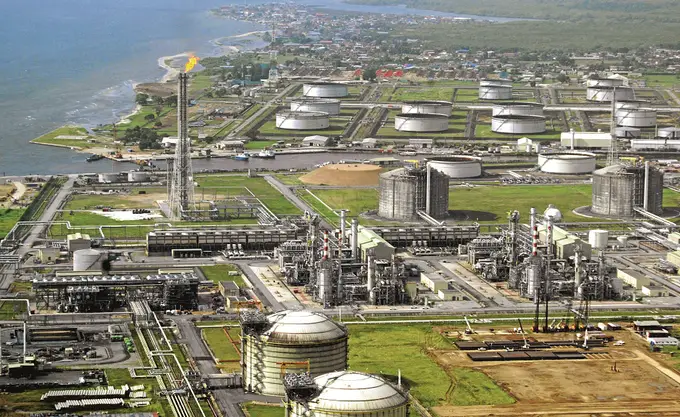In recent years we’re witnessing more and more oil companies adapting to the new rules of global sustainability trend. With the governments of oil-rich countries setting new bars for lower emissions and increased percentage of renewable sources in their national energy schemes, the oil and gas industry is trying to catch up with new technologies and solutions, with one goal – making the industry more sustainable and environmentally-friendly. These are the some of the most significant advancements.
Streamlined processes
Including a wide range of innovations that don’t necessarily make oil and gas processing cleaner, there are the solutions that contribute to the industry’s overall stability by allowing for more cost-efficient processes.
New ultrasound technologies, for example, enable prospectors to create 3-D images of the oil well interiors, driving more accurate decisions. Operational inefficiencies are also being eliminated through the use of IIOT, analytics, automation, reserve replacement and enhancement capabilities, and artificial intelligence programmes. By improving the efficiency of their ongoing operations by only a notch, oil and gas companies can keep their production yield, but with lesser costs and energy use.
Advanced drilling
Opposed to the traditional natural gas and oil wells that are drilled vertically at depths ranging from a few thousand feet to as deep as five miles, today’s advanced drilling technology is dedicated to reaching more reserves while reducing the environmental footprint of drilling operations.
The main directions include drilling smaller holes and generating less waste, creating less noise, avoiding sensitive ecosystems, and completing drilling operations more quickly. In horizontal drilling, for example, the well extends horizontally into multiple “legs” with fewer surface disturbances. Multilateral drilling, on the other hand, allows companies to branch out form the main well at different depths, increasing the production of one rig tremendously.
Cleaner hydraulic fracturing
This oil production technique which is based on extracting oil from shale and other tight geological formations is allowing countries like the United States to increase domestic production and become less dependent on oil imports.
However, fracturing rock requires large amount of water, which can be contaminated by chemicals being released from the rock strata. This may severely affect the availability of fresh water and impact aquatic habitats in some parts of the country. Mike Chadsey, Director of Public Relations for the Ohio Oil and Gas Association, says that technology could provide a more environmentally-acceptable solution. Advances in seismic technology provide more accurate information about the consistency of the rock, with sensory equipment and mathematics models that help finding natural cracks that can be exploited with fewer disturbances.
Reducing gas and fluid leaks
The process of drilling oil and gas inevitably generates large amounts of drill cuttings and used muds. Faced with environmental concerns, both onshore and offshore, operators have developed a range of methods for managing this drilling waste. As a result of limited space and strict environmental regulations, in offshore production, the only options are cuttings re-injection, offshore discharge and transportation to onshore disposal facilities.
Onshore operations, on the other hand, have access to more waste management options, such as solid control systems, which remove drill cuttings from the mud at the surface, just before the mud re-enters the mud pit for re-circulation. The early removal of these solids and contaminants avoids accumulations and clogging of the system, while the residue is kept for further treatment. Recent advances in modern solids control equipment have allowed for an improved environmental control and reduction of drilling fluid spills, with several US states considering or already implementing closed loop systems on their fields.
Enhancing the tertiary methods
New technologies are enabling oil and gas producers to extract oil from individual wells on the larger scale than ever before. According the US Department of Energy (DOE), crude oil production in the United States involves three methods of recovery: primary, secondary, and tertiary. In primary recovery, the natural reservoir pressure or gravity forces the oil into the wellbore, often aided by mechanical lifting of pumps.
This method is accounted for only 10% of the reservoir’s oil. During secondary recovery, water is injected to displace oil, extending the field’s productive life, but creating possible environmental disadvantages for the additional 20% to 40% of the reserves. However, much is expected from tertiary or enhanced oil recovery which includes thermal recovery and carbon dioxide injecting, which increase the productive life of oil wells even further.
Oilfield digitalisation
Further enhancing operational improvements, the digitization of the oil and gas industry has allowed for the creation of digital oilfields. Through the use of cloud technologies and big data, these digital oilfields allow for monitoring and analysis of all operational data in real time, which ultimately leads to safer and more sustainable decision making. Through better use of data, the operational complexities of oil and gas operations can be overcome, leading to returns of even 30-50 times the original investment and reducing ecological impact by reducing wastage, accidents and bottlenecks.
Most oil and gas operators today are dedicated to developing and implementing environmental management systems which help identify, manage and minimize potential environmental impacts. While the extent and approach of adopting these practices varies between companies, at regional levels there are specific agreements and conventions related to reducing the impact of the industry operations.

